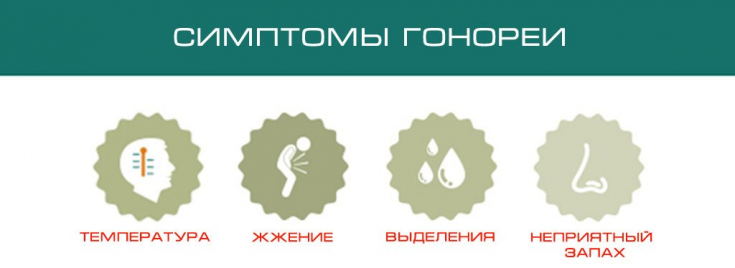Gonorrheal infection is one of the most dangerous and, unfortunately, widespread sexually transmitted diseases. According to the World Health Organization, more than 200 million people worldwide develop gonorrhea every year. The main danger of gonorrhea lies in the fact that an untimely diagnosed and cured infection is highly likely to lead to the development of infertility, both for women and men with gonorrhea.
Estet-portal.com found out that even timely prescribed therapy does not always effectively eliminate the pathological process, which is why there are criteria for the successful treatment of gonorrhea.
- What criteria will help confirm the successful treatment of gonorrhea
- First follow-up examination after finishing treatment for gonorrhea
- Follow-up examinations after the end of treatment for gonorrhea
- Who should be tested if a woman has gonorrheal infection
What criteria will help confirm the fact of successful treatment of gonorrhea
Antibacterial therapy is the mainstay of gonorrhea treatment, but it does not always make it possible to effectively and quickly eliminate the disease. With clear criteria cure of gonorrhea can be monitored and made sure that the pathological process is eliminated, and the patient is not a carrier and distributor of this infectious disease.
Read also: Nutritionist: how to lose hormonal weight once and for all
Such criteria were developed in 2001 in Europe and remain relevant today. Strict adherence to the recommendations of the European guidelines allows you to most effectively cure the pathology and limit the further spread of the disease between sexual partners.
Criteria for successful treatment of gonorrhea:
- First follow-up examination after the end of treatment for gonorrhea;
- follow-up examinations after the end of treatment for gonorrhea;
- who should be tested if a woman has a gonorrhea infection.
First follow-up examination after treatment for gonorrhea
The first follow-up examination of a woman with gonorrhea is carried out 7-10 days after the end of treatment for gonorrhea. The criteria for cure for gonorrhea during this period are the disappearance of all the characteristic symptoms of gonorrhea infection, as well as the absence of gonococci in smears from the urethra, cervical canal and rectum, which is confirmed by bacterioscopic examination.

Read also: Gynecologist: 5 main reasons why ovaries hurt
Provocation tests are possible, in which swabs are taken after 24, 48 and 72 hours and cultures of secretions are performed after 2-3 days.
Subscribe to our page on Facebook!
There are several main types of provocation:
- physiological – the sample is taken during menstruation;
- chemical – the sample is taken after lubricating the urethra and cervical canal with a solution of silver nitrate;
- biological – test after intramuscular injection of gonovaccine;
- physical – test after inductothermy;
- alimentary – test after eating salty or spicy food, drinking alcohol;
- combined – combination of various types of provocations.
Follow-up examinations after the end of treatment for gonorrhea

The second follow-up study is performed on the days of the next menstrual period in a patient who was treated for gonorrhea. With the help of bacterioscopy, the discharge from the urethra, cervical canal and rectum, taken three times with an interval of a day, is examined. The third examination is carried out after the end of menstruation.
The patient is given a combined provocation, and then, after 24, 48 and 72 hours, a bacterioscopic examination is performed, and on the 2nd and 3rd days, a bacteriological examination. In both cases, the criterion for successful treatment of gonorrhea is the absence of gonococci in patient smears.
Who should be tested if a woman has been diagnosed with gonorrhea
In addition to the examination of the patient herself, who fell ill with gonorrhea, an important point is also the examination of her sexual partners. All partners with whom the woman had sexual contact within 30 days before the onset of the first symptoms of gonorrhea infection, as well as all people who were in close contact with the patient, are involved in the examination and mandatory treatment.
Read also: A symptom of a dangerous disease: excessive sweating of the hands
In cases where gonorrhea was asymptomatic and was discovered incidentally, examine all sexual partners who had contact with the patient during the 60 days prior to the diagnosis of gonorrhea infection. Children of mothers with gonorrhea, as well as all girls, if they were cared for by persons who were diagnosed with gonorrhea infection, are also subject to examination.
More useful information on our YouTube channel:







Add a comment